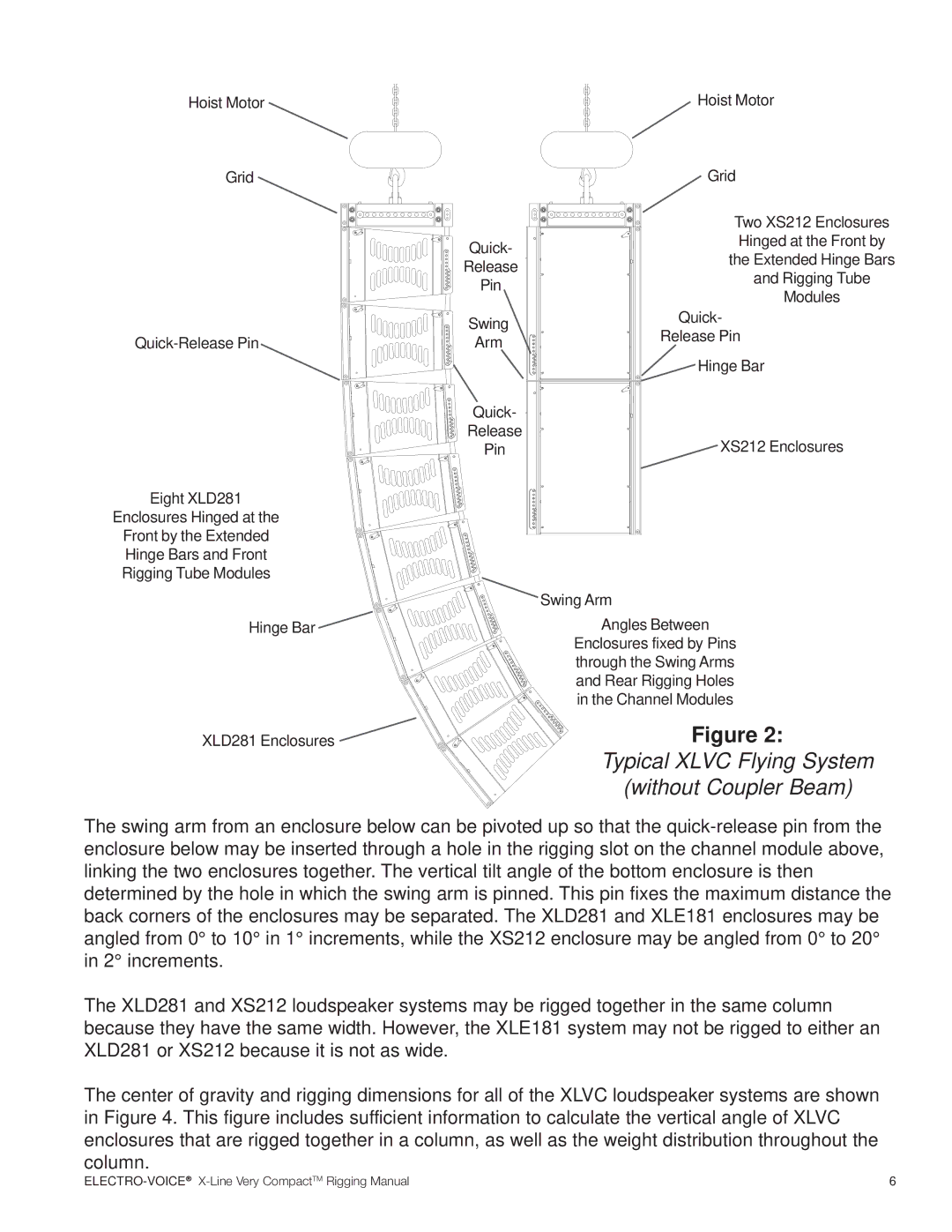
Hoist Motor
Grid ![]()
Eight XLD281
Enclosures Hinged at the
Front by the Extended
Hinge Bars and Front
Rigging Tube Modules
Hinge Bar ![]()
XLD281 Enclosures ![]()
Quick-
Release
Pin
Swing
Arm
Quick-
Release
Pin
Hoist Motor
Grid
Two XS212 Enclosures
Hinged at the Front by
the Extended Hinge Bars
and Rigging Tube
Modules
Quick-
Release Pin
![]() Hinge Bar
Hinge Bar
![]() XS212 Enclosures
XS212 Enclosures
Swing Arm
Angles Between
Enclosures fixed by Pins through the Swing Arms and Rear Rigging Holes in the Channel Modules
Figure 2:
Typical XLVC Flying System
(without Coupler Beam)
The swing arm from an enclosure below can be pivoted up so that the
The XLD281 and XS212 loudspeaker systems may be rigged together in the same column because they have the same width. However, the XLE181 system may not be rigged to either an XLD281 or XS212 because it is not as wide.
The center of gravity and rigging dimensions for all of the XLVC loudspeaker systems are shown in Figure 4. This figure includes sufficient information to calculate the vertical angle of XLVC enclosures that are rigged together in a column, as well as the weight distribution throughout the column.
6 |
